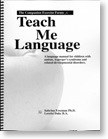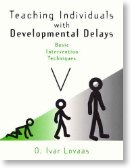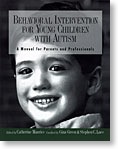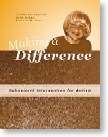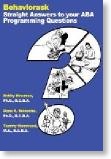integration
Are there any Summer camps that do disability inclusion right?
08/07/13 12:09 Filed in: autism
As Summer is upon us, the thought goes to Summer camp where many typically developing children spend a few weeks away from home, hopefully to have transformational camp experiences. Of course, we would love this for our children with autism as well, but then starts the depressing search, where we find no shortage of camps that segregate our children and frequently lump all children with disabilities into one heterogeneous group. The search for a Summer camp that is truly inclusive can be a difficult one.
I recently landed upon a website of a camp called Ramah that I think is actually doing inclusion right. Based on the six-minute description offered by the director of their special needs programs, it has been a process from segregation to integration based on parent request. In short, this is a Summer camp that actually listened to parents in their community!
The camp describes a four track orientation, with segregated cabins for some campers and vocational training during camp; however, they also offer an integrated cabin experience where they train staff prior to camp, and add an extra counsellor so that there is sufficient staff to ensure that the child with special needs is properly supported.
What impressed me most is that some of these campers with special needs actually went on to be hired by camp and became staff members themselves. That’s truly putting your money where your mouth is! Let’s hope that other camps emulate this model and truly integrate children with special needs into their communities.
I recently landed upon a website of a camp called Ramah that I think is actually doing inclusion right. Based on the six-minute description offered by the director of their special needs programs, it has been a process from segregation to integration based on parent request. In short, this is a Summer camp that actually listened to parents in their community!
The camp describes a four track orientation, with segregated cabins for some campers and vocational training during camp; however, they also offer an integrated cabin experience where they train staff prior to camp, and add an extra counsellor so that there is sufficient staff to ensure that the child with special needs is properly supported.
What impressed me most is that some of these campers with special needs actually went on to be hired by camp and became staff members themselves. That’s truly putting your money where your mouth is! Let’s hope that other camps emulate this model and truly integrate children with special needs into their communities.
Autism & Wandering: Common Sense Solutions
15/10/12 12:13 Filed in: autism | Asperger's Syndrome
Fears about children with autism wandering off have kept many a parent awake at night. When you have a child who wanders, or in some cases i
The issue that keeps almost all of us awake is when our child is in the care of the school. Unfortunately, most children with autism in typical classrooms do not have locked, fenced school yards and enough supervision to keep these integrated children safe. The schools are very quick to defend their purportedly safe environments even when a parent sees all the gaping holes in security around the school. If the parent gets too pushy, the school bureaucracy often defends their lackadaisical stance and becomes aggressive with parents, possibly invoking the nuclear option by saying: “if this school is not secure enough for your little Johnny, then perhaps we need to reevaluate whether your child should be integrated.” Since so many parents are fighting for mainstreaming, this ends the discussion immediately and is one of the major motivations to get “lawyered up.” Some parents just give up and accept segregation due to the safety concerns.
Since the parent cannot rely on the school to protect the physical safety or their child, the next fight is to require one-on-one supervision in the school yard. The school then typically deploys the “buddy” system where they get older children to “supervise” the autistic child even in elementary school!
I came across an article by Amy Daniels, Ph.D., an Autism Speaks health policy researcher, who gives an in-depth analysis of autism and wandering. At the end of the article she says: “The time to develop solutions is now.” I couldn’t agree with her more.
Here’s my solution. Every school yard needs to be 100% secured with high fences and no way to get in or out from the school compound. All exits from the school need to be monitored every day, all day.
With the number of children afflicted with autism growing, every school will have to be secured. Not only will this help children with autism, it will also help all children remain safe and give every parent a better night’s sleep.
t may be more accurate to say is an “escape artist,” as long as the child is in your care you can create a safe environment with locks on windows and doors and alarms that sound any time someone opens a window or door. Thousands of parents have created the equivalent of Fort Knox in their home and have trained everyone in the child’s orbit to ensure that the child does not leave. Parents are generally vigilant and the child is safe. Some parents have even elected to have a tracking system on their child as a last resort.The issue that keeps almost all of us awake is when our child is in the care of the school. Unfortunately, most children with autism in typical classrooms do not have locked, fenced school yards and enough supervision to keep these integrated children safe. The schools are very quick to defend their purportedly safe environments even when a parent sees all the gaping holes in security around the school. If the parent gets too pushy, the school bureaucracy often defends their lackadaisical stance and becomes aggressive with parents, possibly invoking the nuclear option by saying: “if this school is not secure enough for your little Johnny, then perhaps we need to reevaluate whether your child should be integrated.” Since so many parents are fighting for mainstreaming, this ends the discussion immediately and is one of the major motivations to get “lawyered up.” Some parents just give up and accept segregation due to the safety concerns.
Since the parent cannot rely on the school to protect the physical safety or their child, the next fight is to require one-on-one supervision in the school yard. The school then typically deploys the “buddy” system where they get older children to “supervise” the autistic child even in elementary school!
I came across an article by Amy Daniels, Ph.D., an Autism Speaks health policy researcher, who gives an in-depth analysis of autism and wandering. At the end of the article she says: “The time to develop solutions is now.” I couldn’t agree with her more.
Here’s my solution. Every school yard needs to be 100% secured with high fences and no way to get in or out from the school compound. All exits from the school need to be monitored every day, all day.
With the number of children afflicted with autism growing, every school will have to be secured. Not only will this help children with autism, it will also help all children remain safe and give every parent a better night’s sleep.
Music Therapy: Discordant Noise on the Internet
12/09/12 14:42 Filed in: autism | Asperger's Syndrome
Information on music and autism abounds on the Internet. There is even a certification board for Music Therapists. That association has a rubric for autism. Autism Speaks (who should know a thing or two about science) is also getting into the act and creating legitimacy for Music Therapy by featuring a guest blogger who is involved in Music Therapy.
Ever the optimist, I thought there may be new research that perhaps I had missed amongst the usual noise on autism and Music Therapy. So I went to the American Music Therapy Association (AMTA) music therapy fact sheets & bibliograpies, in search of what they have on the topic.
This is what I found:
“The literature reports that most individuals with ASD respond positively to music. People with ASD often show a heightened interest and response to music, making it an excellent therapeutic tool for working with them.”
This reminds me of the Psychic Network infomercials of a few years ago: “Trust us, we’re for real!”
Now, please, don’t get the wrong idea. I’ve blogged about the value of music (“The Role of Music” Part 1 and Part 2) and how helpful it is for integration, employment, and enjoyment for people with autism; however, that is very different from the so-called autism intervention of Music Therapy.
In short, once again we need to remind Music Therapy advocates that for the broader community to take you seriously, please Show us the data!
Until such time, we should not be calling any activity involving music and people afflicted with autism, “therapy.”
Aside from what we know is established in the science, I’ve recently written about a preliminary bright spot in research on music - the targeting of non-verbal children with autism. However, this should not be confused with the fashion de jour Music Therapy that is being offered. This new area of research is experimental and developing in the field of Neurology. Hopefully, more evidence will soon be collected regarding these experimental techniques and non-verbal children with autism will hopefully have an effective treatment for speech impairment at some point in the future.
Ever the optimist, I thought there may be new research that perhaps I had missed amongst the usual noise on autism and Music Therapy. So I went to the American Music Therapy Association (AMTA) music therapy fact sheets & bibliograpies, in search of what they have on the topic.
This is what I found:
“The literature reports that most individuals with ASD respond positively to music. People with ASD often show a heightened interest and response to music, making it an excellent therapeutic tool for working with them.”
This reminds me of the Psychic Network infomercials of a few years ago: “Trust us, we’re for real!”
Now, please, don’t get the wrong idea. I’ve blogged about the value of music (“The Role of Music” Part 1 and Part 2) and how helpful it is for integration, employment, and enjoyment for people with autism; however, that is very different from the so-called autism intervention of Music Therapy.
In short, once again we need to remind Music Therapy advocates that for the broader community to take you seriously, please Show us the data!
Until such time, we should not be calling any activity involving music and people afflicted with autism, “therapy.”
Aside from what we know is established in the science, I’ve recently written about a preliminary bright spot in research on music - the targeting of non-verbal children with autism. However, this should not be confused with the fashion de jour Music Therapy that is being offered. This new area of research is experimental and developing in the field of Neurology. Hopefully, more evidence will soon be collected regarding these experimental techniques and non-verbal children with autism will hopefully have an effective treatment for speech impairment at some point in the future.
Successful Autism Integration: How it makes ALL kids better human beings
02/05/12 13:08 Filed in: autism | Asperger's Syndrome
As parents of children with autism, we want our children to have the same kind of enriching experiences in life as do typically developing children. The best way to ensure a rich childhood, full of opportunities, is to integrate our children with typically developing children.
Unfortunately, there are often barriers created by a variety of people, particularly a small percentage of parents of typically developing children. These parents see no benefit for their children to be integrated with children who are challenged with special needs. This is particularly true when it comes to the integration of children afflicted with autism. Let’s face it: our children are not always reinforcing for others and they often behave in ways that completely ignore social norms. This can create discomfort for some.
However, what many parents of typically developing children do not understand is the tremendous value of successful integration of the disabled for their typically developing children.
So what is the value of successful integration for typically developing kids? Here is a partial list.
Typically developing children:
That’s a long list of very valuable benefits to integration; however, the most important benefit for typically developing children when they are properly integrated and interacting with children who suffer from autism, is that they learn to become decent human beings. I think most would agree we can use more of that in our society.
Many parents send their children to faith-based organizations to learn how to be a person with good values. Just add a child with autism to the mix, and the learning process is greatly accelerated.
Unfortunately, there are often barriers created by a variety of people, particularly a small percentage of parents of typically developing children. These parents see no benefit for their children to be integrated with children who are challenged with special needs. This is particularly true when it comes to the integration of children afflicted with autism. Let’s face it: our children are not always reinforcing for others and they often behave in ways that completely ignore social norms. This can create discomfort for some.
However, what many parents of typically developing children do not understand is the tremendous value of successful integration of the disabled for their typically developing children.
So what is the value of successful integration for typically developing kids? Here is a partial list.
Typically developing children:
- learn not to prejudge the ability of others
- learn how to break down skills and teach them to others, thereby becoming excellent teachers
- are exposed to exceptionally positive role models in the form of therapists, psychologists and tutors
- receive much more positive adult attention than they otherwise would in a large group of children, since successful integration requires the adult/child ratio to be greater
- learn to feel very good about themselves and their ability to lead
- are forced to look beyond their egocentric world and see that there are others in the world with real challenges, who are far less fortunate only because they drew the short straw in life’s lottery
- become very comfortable with people who are disabled
- learn empathy
- are protected from bullying due to the increased adult supervision that surrounds children with autism
- are provided more enriching opportunities due to the adults who often orchestrate and/or design rich social interactions
- are exposed to potential career opportunities and lucrative job prospects
- have a great experience to put on their resume when applying to college
That’s a long list of very valuable benefits to integration; however, the most important benefit for typically developing children when they are properly integrated and interacting with children who suffer from autism, is that they learn to become decent human beings. I think most would agree we can use more of that in our society.
Many parents send their children to faith-based organizations to learn how to be a person with good values. Just add a child with autism to the mix, and the learning process is greatly accelerated.
Autism Integration Mustn't Be a Boilerplate Approach
24/04/12 12:21 Filed in: autism
Educational and recreational segregation used to be the model for children with special needs. Then, integration came into vogue. Now we’re got segregationists debating integrationists, and truly, we’re all missing the point.
Recently I heard an interview given by a blogger, Harold Dougherty who describes his child being forced into an integrated setting that was a disaster for his son. He describes the new bureaucrat in charge as being an integration extremist, with very bad consequences for the child. This situation is outrageous!
The issue is not segregation versus integration, but rather that children should never be FORCED to be either integrated or segregated. Instead of being placed in a setting that works best for the child in consultation with the child’s treatment team, some children are apparently placed based on a) the philosophy of the reigning bureaucrat or “educrat” of the day and/or b) the cheapest placement for the school district.
Every child should have the right to be integrated when the integration works FOR THAT CHILD. When an integrated setting is inappropriate and does not work, the answer is not a segregated setting with a group of children who are being ghettoized but rather, one-on-one treatment that is customized for the specific child with autism. Then, the treatment professional can grab every possible integration opportunity available for that child when it works, and can work toward integration opportunities when the child needs to learn pro-social behaviors and routines prior to the effort at integration.
To illustrate, it may be counterproductive for an untreated child suffering from severe autism to be placed in a calculus class. Prior to placing the child in the integrated setting, he or she needs to learn the skills and routines to be successful in that setting. This goes for educational settings as well as recreational settings.
Put simply, the autism treatment team, along with the parent, should be making all integration decisions for the child rather than the school district!
For any education bureaucrats out there, remember, Individual Education Plans (IEPs) are called “individual” for a reason!
Recently I heard an interview given by a blogger, Harold Dougherty who describes his child being forced into an integrated setting that was a disaster for his son. He describes the new bureaucrat in charge as being an integration extremist, with very bad consequences for the child. This situation is outrageous!
The issue is not segregation versus integration, but rather that children should never be FORCED to be either integrated or segregated. Instead of being placed in a setting that works best for the child in consultation with the child’s treatment team, some children are apparently placed based on a) the philosophy of the reigning bureaucrat or “educrat” of the day and/or b) the cheapest placement for the school district.
Every child should have the right to be integrated when the integration works FOR THAT CHILD. When an integrated setting is inappropriate and does not work, the answer is not a segregated setting with a group of children who are being ghettoized but rather, one-on-one treatment that is customized for the specific child with autism. Then, the treatment professional can grab every possible integration opportunity available for that child when it works, and can work toward integration opportunities when the child needs to learn pro-social behaviors and routines prior to the effort at integration.
To illustrate, it may be counterproductive for an untreated child suffering from severe autism to be placed in a calculus class. Prior to placing the child in the integrated setting, he or she needs to learn the skills and routines to be successful in that setting. This goes for educational settings as well as recreational settings.
Put simply, the autism treatment team, along with the parent, should be making all integration decisions for the child rather than the school district!
For any education bureaucrats out there, remember, Individual Education Plans (IEPs) are called “individual” for a reason!
I sure hope autism centers aren't stealth segregation
12/01/12 12:53 Filed in: autism | Asperger's Syndrome
Seemingly once a month, the media publicizes yet another autism center breaking ground or opening thanks to a generous grant from somewhere. All this incredible generosity is designed to help children with autism.
At first glance, the concept of an autism center sounds ideal and supportive of children with autism, but we need to ask whether segregated treatment or educational centers are really the best way to go for this population of children. If an autism center is a place to train professionals or have weekly team meetings, I understand the role of the center; however, if an autism center is a place where children are segregated from the population at large at the earliest age, I think we, as a community, are making a huge mistake.
Integration and inclusion are easiest when children with autism are young. My fear is that if we segregate kids when they are young, we may be sealing their fate as segregated middle schoolers, high schoolers and adults. It becomes increasingly difficult to integrate children with autism as they get older, so if we do not start young, we may never begin. Children with autism need to learn typical school patterns when they are in preschool and kindergarten so that by the time they reach fourth grade, they only have to be challenged with the curriculum rather than the potpourri of social and instructional skills that they’ve learned from preschool. If we keep postponing integration, we will inadvertently rob kids with autism of a typical childhood.
Although every child is different, many children can begin integration as preschoolers after six months to a year of intensive treatment. Some children will need a trained aide to accompany them; however, it very often is still the right time to integrate these young children.
If new autism centers are places to guarantee integration, that’s a great use of the generosity of good people; however, if they are gold-plated segregated sites, I fear we are sliding into the bad ole days of systemic segregation.
At first glance, the concept of an autism center sounds ideal and supportive of children with autism, but we need to ask whether segregated treatment or educational centers are really the best way to go for this population of children. If an autism center is a place to train professionals or have weekly team meetings, I understand the role of the center; however, if an autism center is a place where children are segregated from the population at large at the earliest age, I think we, as a community, are making a huge mistake.
Integration and inclusion are easiest when children with autism are young. My fear is that if we segregate kids when they are young, we may be sealing their fate as segregated middle schoolers, high schoolers and adults. It becomes increasingly difficult to integrate children with autism as they get older, so if we do not start young, we may never begin. Children with autism need to learn typical school patterns when they are in preschool and kindergarten so that by the time they reach fourth grade, they only have to be challenged with the curriculum rather than the potpourri of social and instructional skills that they’ve learned from preschool. If we keep postponing integration, we will inadvertently rob kids with autism of a typical childhood.
Although every child is different, many children can begin integration as preschoolers after six months to a year of intensive treatment. Some children will need a trained aide to accompany them; however, it very often is still the right time to integrate these young children.
If new autism centers are places to guarantee integration, that’s a great use of the generosity of good people; however, if they are gold-plated segregated sites, I fear we are sliding into the bad ole days of systemic segregation.
A dog sees only in black and white, but WE can see a rainbow of possibilities
04/11/11 11:32 Filed in: autism | Asperger's Syndrome

If the family deploys the service dog wisely, and the service dog is able to go “under cover” and simply look to the outside world as the family dog, that dog can become a social lubricant to the community on the street and with other kids and parents in the park. Dog owners are repeatedly stopped and asked about their dog when out on a walk. The dog gives the child opportunities to answer questions and to engage in conversation. What’s great about this conversation is that the child can be taught to answer the various questions that are generally asked again and again. In short, the dog can help to de-stigmatize the child and his family, and the family becomes recast in the neighborhood as the nice family with the great dog, rather than perhaps that stressed out family with the special needs kid. Once there is a dog in the mix, the family is far more approachable and the child carries a new label: dog lover or dog owner.
There is a big world out there of dog lovers, and they recognize each other. You are either a member of the “dog lover’s club” or not. The beauty of a service dog is that, to the uninitiated, the dog just looks very well bred, with a great disposition, rather than professionally trained. In addition, part of the training of a service dog can be simple tricks which act like a magnet in the park to bring children to interact with the child! Then the child with autism becomes the kid who is great at teaching the dog to perform on command. Competence replaces disability. Service dogs can certainly perform an important safety role for persons with disability, but for kids with autism, the dog’s service can extend to social normalization and community integration, for the child and family. That’s important too!
Steve Jobs and the Art of Autism Cool
14/10/11 09:11 Filed in: autism | Asperger's Syndrome
With the passing of Steve Jobs, I’ve read all about this incredible thinker’s contribution to our world, and even to the progress of our children with autism; few understood that what Jobs also did was help make our kids “cool.” Read more...



